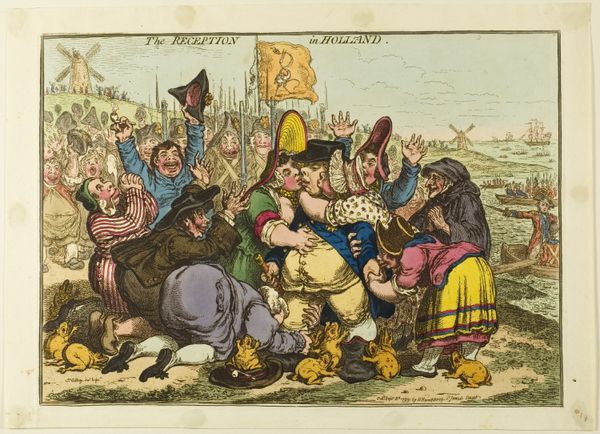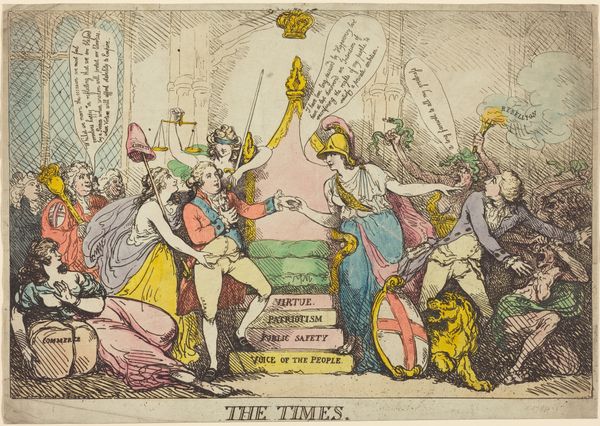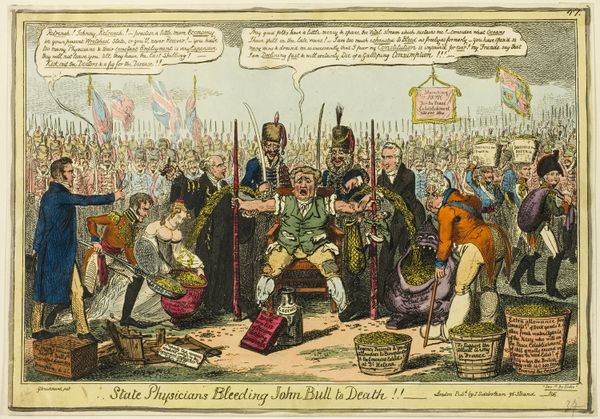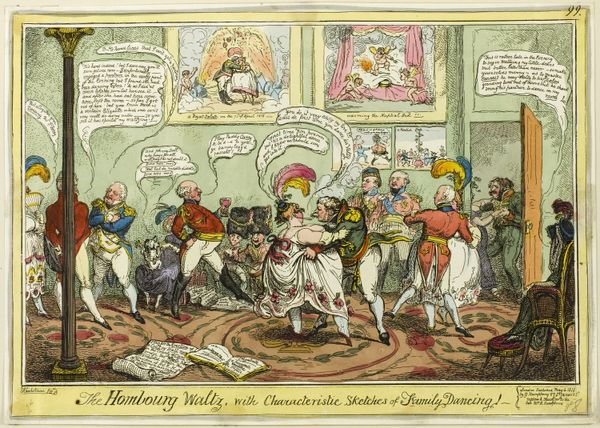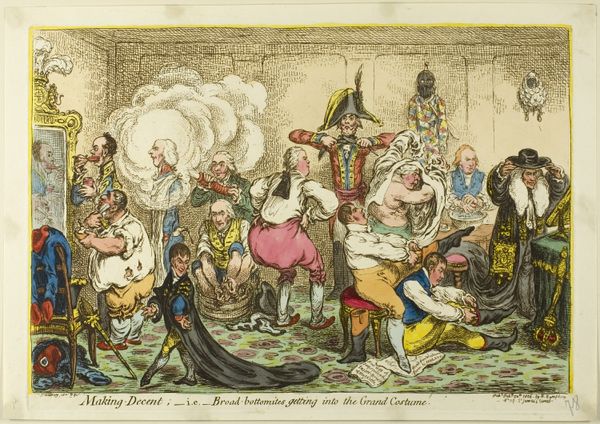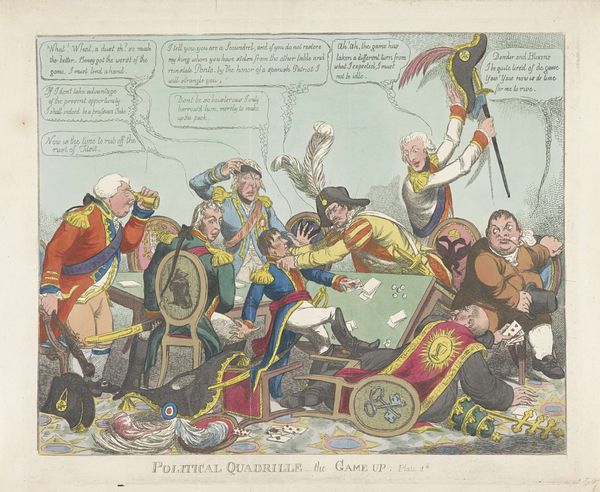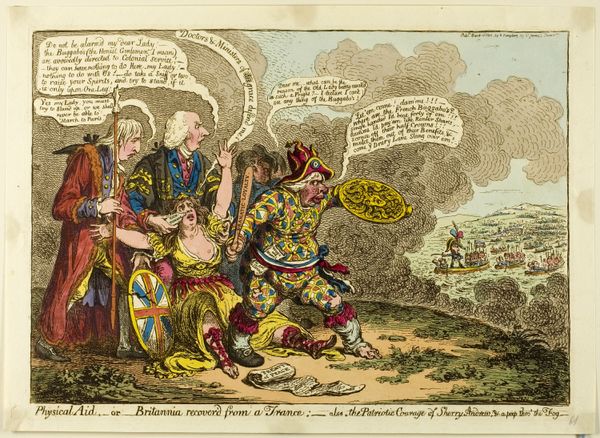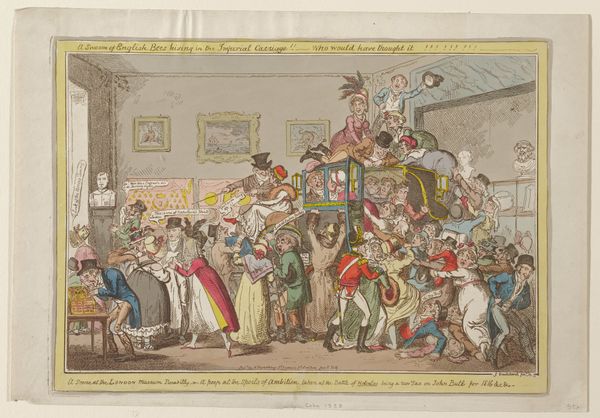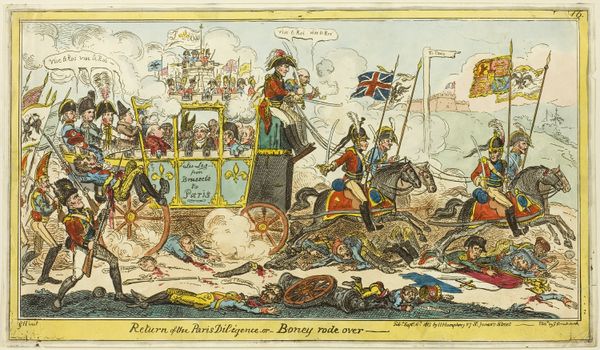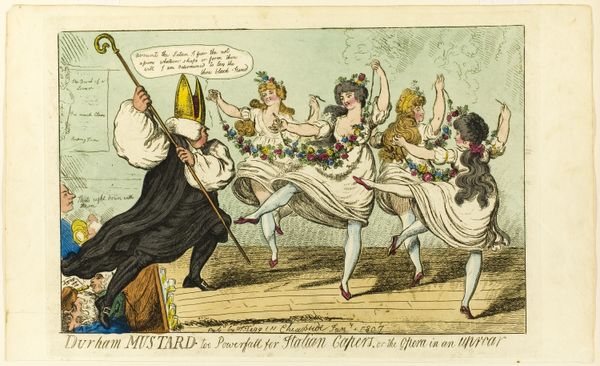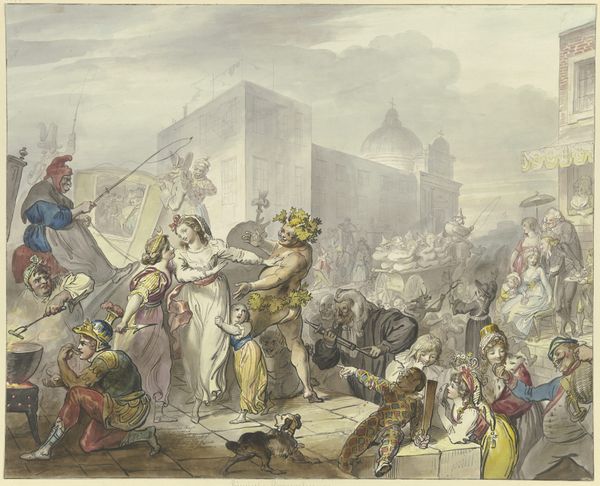
The Afterpiece to the Tragedy of Waterloo Possibly 1815
0:00
0:00
drawing, print, etching, paper
#
drawing
#
narrative-art
#
comic strip
# print
#
etching
#
caricature
#
paper
#
romanticism
Dimensions: 244 × 345 mm (image); 250 × 355 mm (plate); 255 × 357 mm (sheet)
Copyright: Public Domain
Curator: This is George Cruikshank’s etching, "The Afterpiece to the Tragedy of Waterloo," likely created in 1815. It's currently held in the collection of the Art Institute of Chicago. Editor: Oh, what a fever dream! It’s chaotic, theatrical… the colors are faded, but the energy feels strangely potent, like a barely contained explosion. It's strangely gripping despite the kind of off-putting imagery. Curator: Absolutely. Cruikshank was a master caricaturist, and this piece, produced shortly after the Battle of Waterloo, serves as scathing political commentary on the aftermath and the treatment of France. The "Madame Françoise" being tormented, of course, is France, personified. Editor: I see that now… she's so helpless looking, with all these figures swarming her, pulling her apart! Is that supposed to be Wellington in shining armor? He's got this demented gleam in his eye… and look at all these greedy little managers eager to rip her apart... terrifying really. Curator: Precisely! Each figure represents a different Allied power or internal political faction vying for influence and control. The symbols—the shattered crown, the manacles—represent the dismemberment of French sovereignty and wealth after Napoleon's defeat. The whole thing functions as a very dark satire on power dynamics. Editor: It’s almost…carnivalesque. A really bitter, nasty carnival. The sheer grotesqueness is kind of impressive; it really drives home the feeling of exploitation and that there is so much to glean from all of the chaos ensuing in Europe. It feels almost lurid, as though Cruikshank delights in depicting human nature in such a negative light. Curator: The style aligns perfectly with Romanticism; a celebration of narrative, charged with social commentary and elevated emotions, revealing itself in sharp contrasts of shadow and light... His intention was to highlight the hypocrisy and avarice underlying the supposed triumph of Waterloo. It really questions the whole celebratory, nationalistic narrative that was spun in Britain at the time. Editor: Right! So, it’s not just about victory, it’s about who profits and how dirty it is behind the scenes. Knowing all this now, seeing all these figures just grabbing and clawing feels… almost contemporary, sadly. Power dynamics always seem to stay this ugly, regardless of what era. Curator: Exactly. It's a powerful and unflattering window into how major events ripple through power structures, always reminding us of the complexities—and casualties—left in their wake. Editor: Yes, a bleak but brilliant reminder that history isn’t always what we read in textbooks; sometimes, it's a grotesque etching yelling the truth at us.
Comments
No comments
Be the first to comment and join the conversation on the ultimate creative platform.

